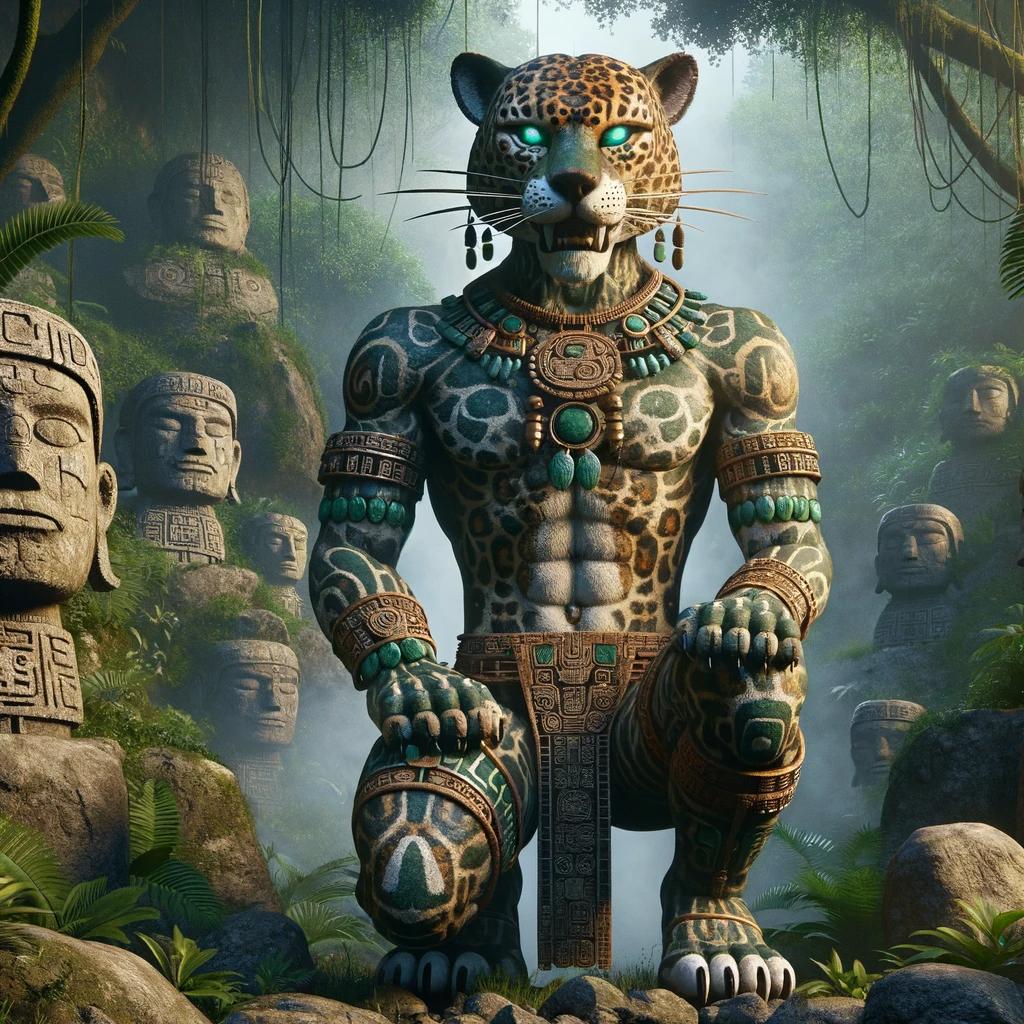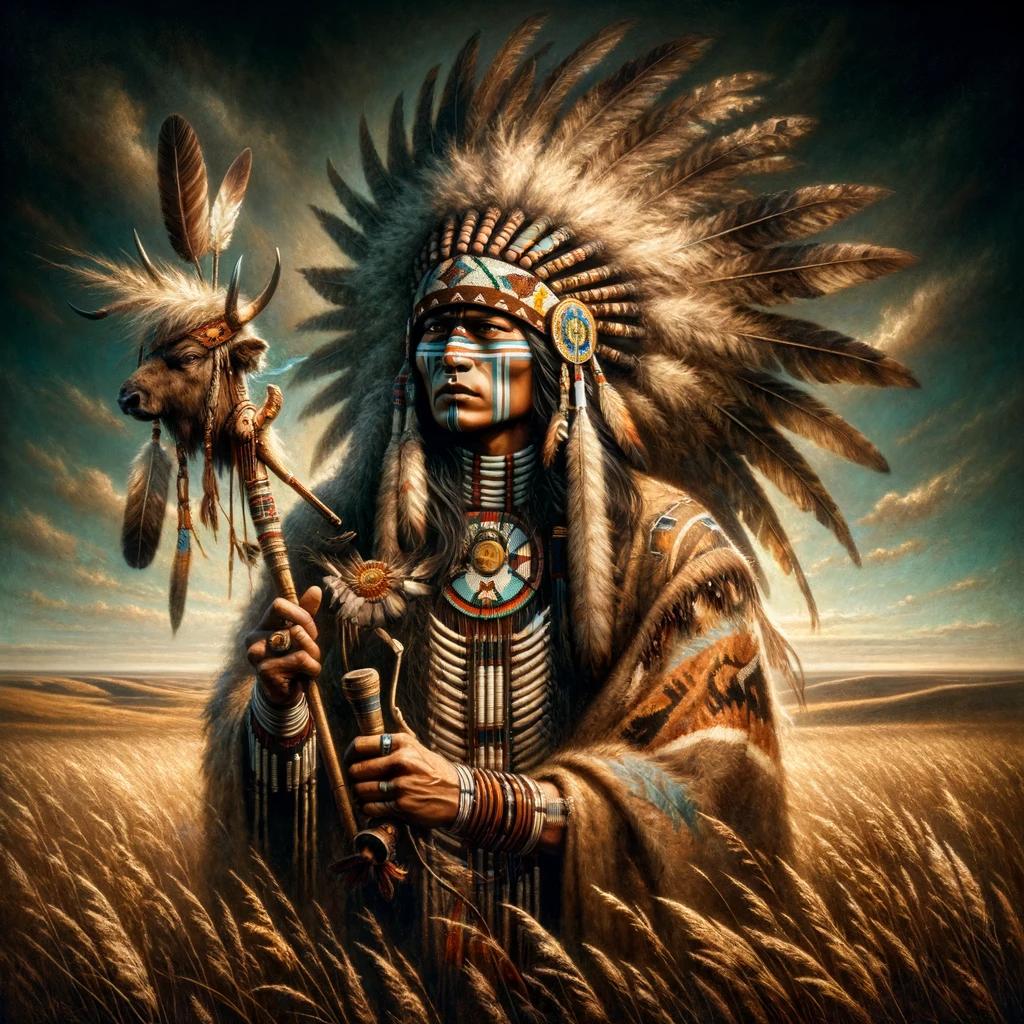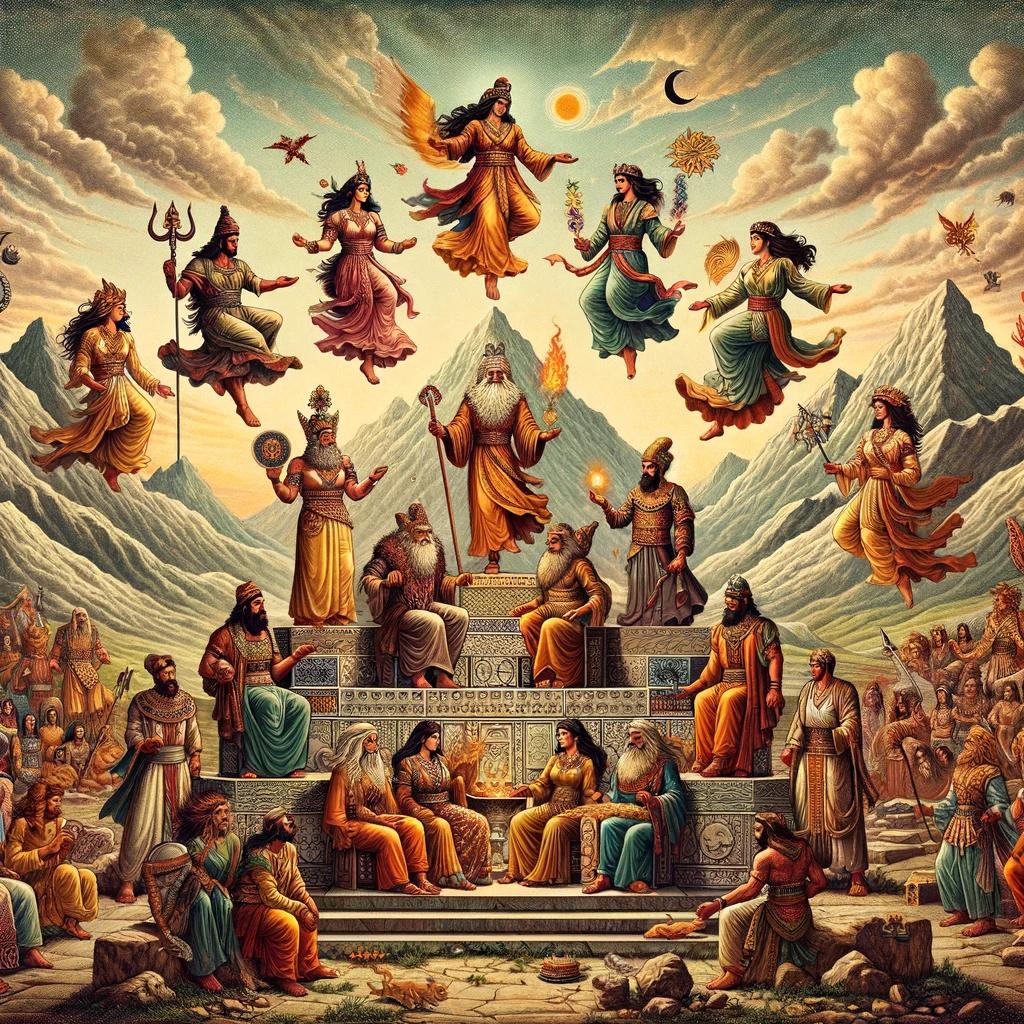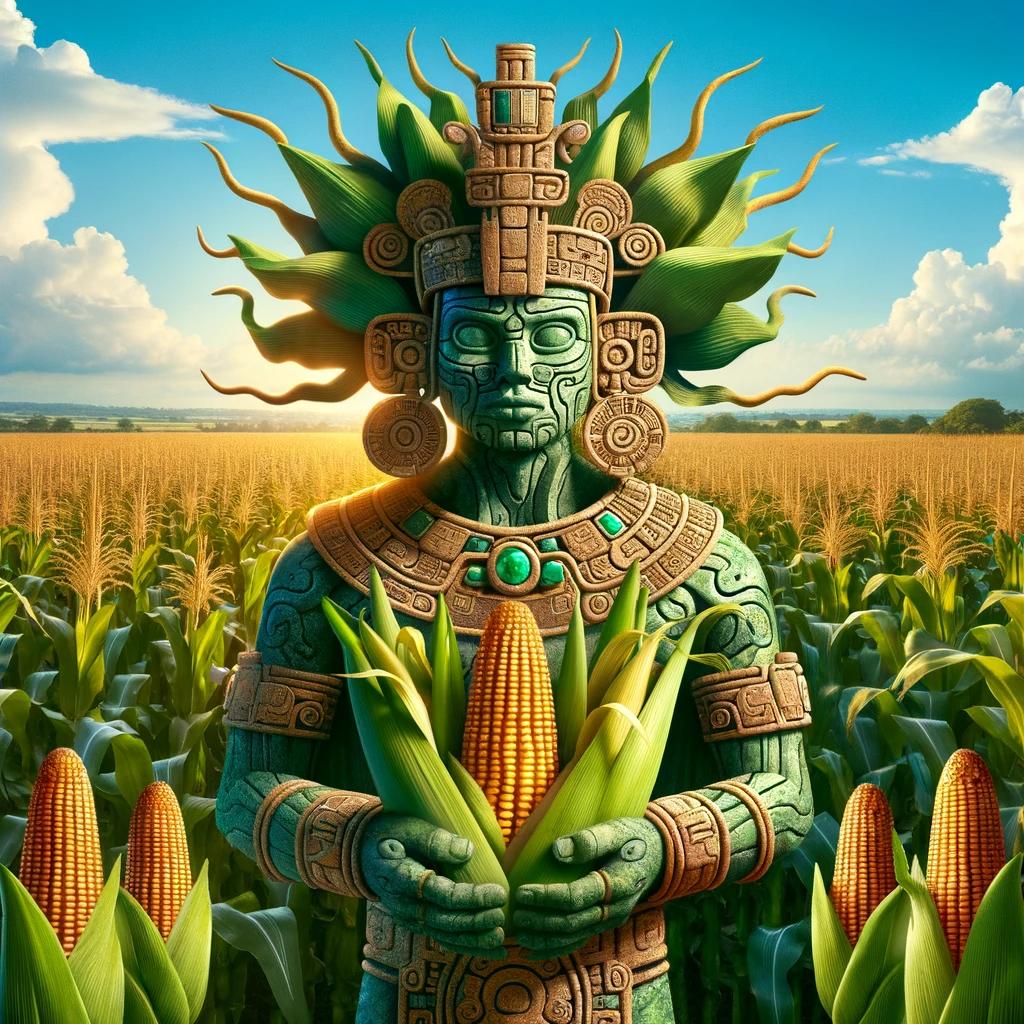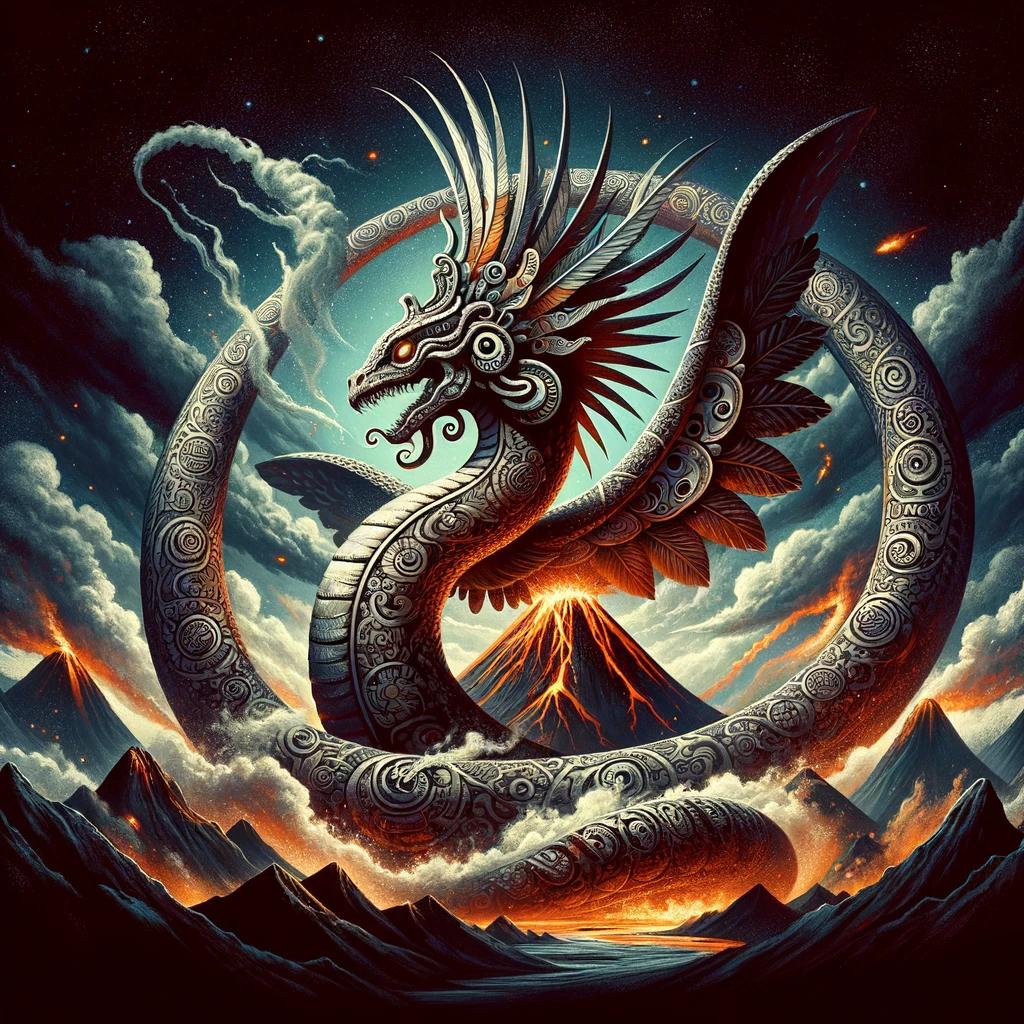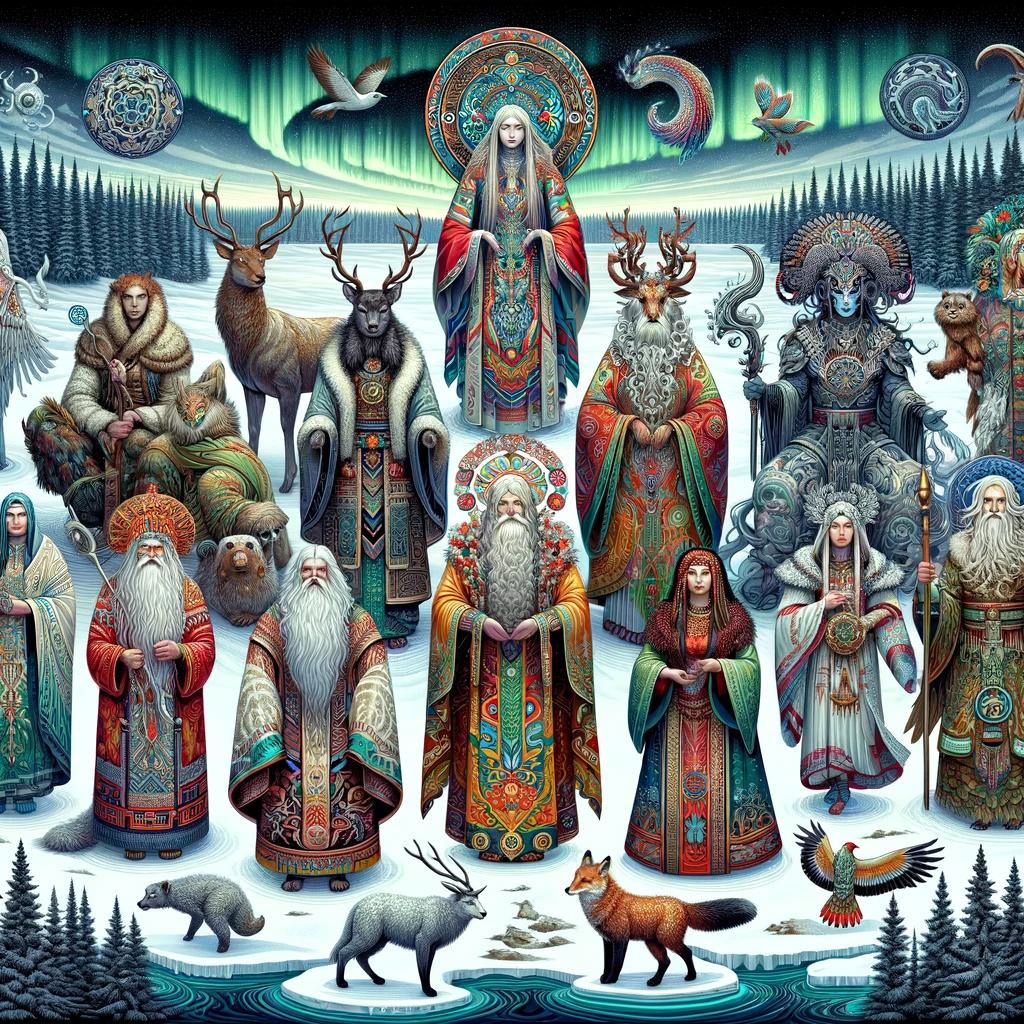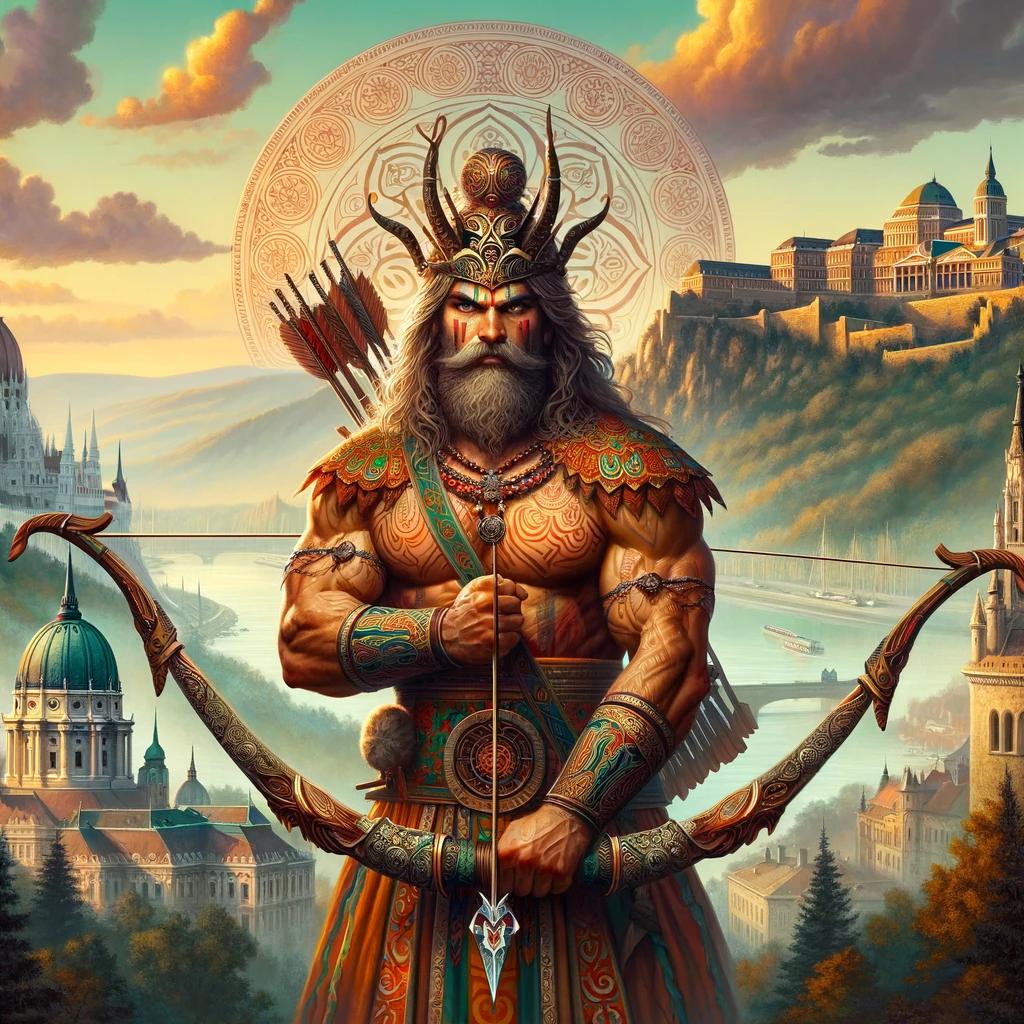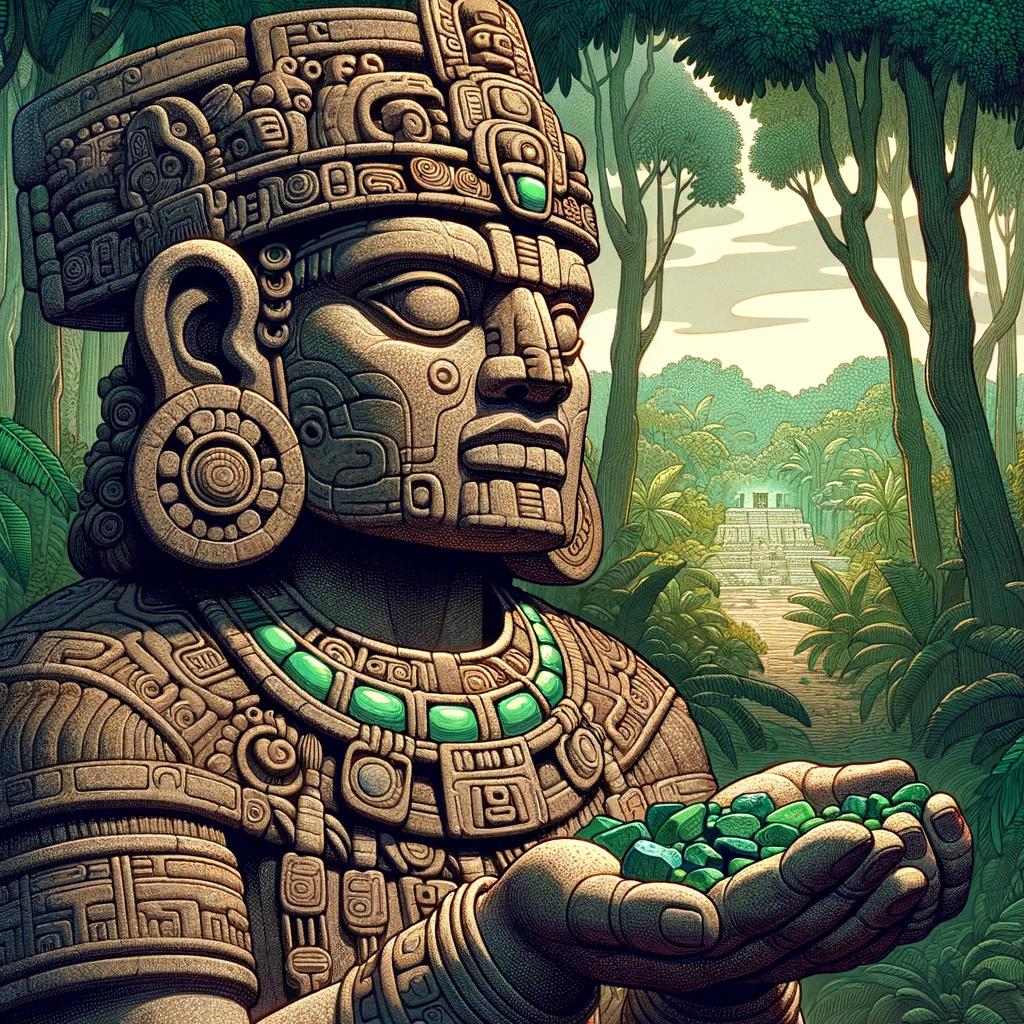Tongan Mythology: Gods and Goddesses Explained
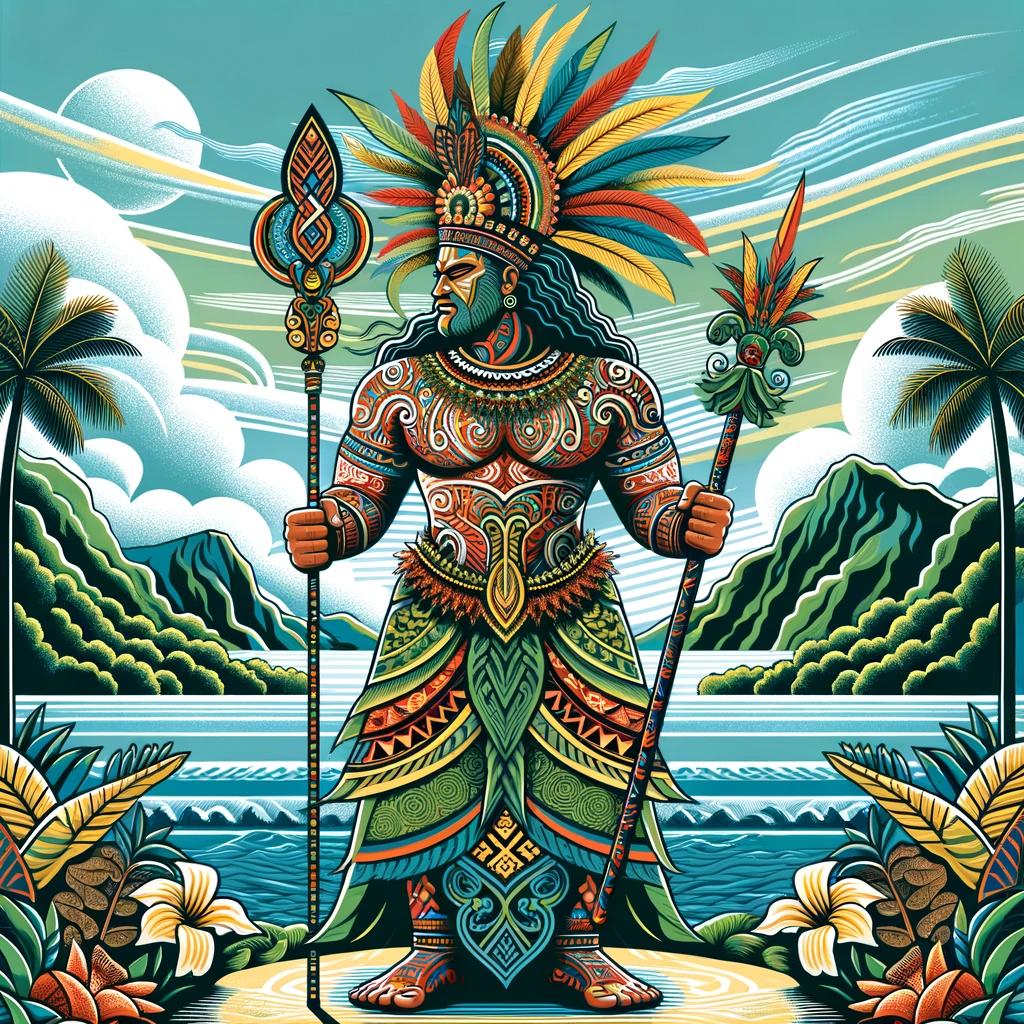
Tongan mythology is rich in gods and goddesses who play significant roles in the creation and balance of the world. One prominent deity is Limu, the primordial god of creation, who, according to mythology, joined forces with the goddess Kele to give birth to Touiafutuna, the progenitor of all creation.
This article provides a brief overview of the gods and goddesses in Tongan mythology, their roles, the creation story, and their influence on Pacific culture.
In Tongan mythology, gods and goddesses hold crucial positions within the divine family tree, with connections to land, sea, and human affairs.
Polynesian mythologies share similarities that can be compared and analyzed. This article also explores the influence of Tongan mythology in popular culture and presents contemporary perspectives on this captivating subject.
A Brief Overview of Tongan Mythology
Tongan mythology is a rich tapestry of gods and goddesses that play significant roles in the creation and balance of the world. Passed down through generations, these mythical narratives reflect the deep-rooted connection of the Tongan people with the natural world and their spiritual beliefs.
In this section, we will explore the key elements and themes of Tongan mythology, providing a concise overview of its divine characters and their mythological significance.
At the center of Tongan mythology stands Limu, the primordial god of creation. According to the mythological accounts, Limu and the goddess Kele joined forces in a divine union, giving birth to Touiafutuna, the revered progenitor of all creation.
Touiafutuna holds a revered position as the ancestor from whom all subsequent gods, goddesses, and mortal beings trace their lineage.
The gods and goddesses of Tongan mythology are not mere abstract concepts but possess distinct roles and responsibilities. They engage with the world in various ways, manifesting their divine powers to maintain harmony and order.
Some deities are associated with specific elements of nature, while others govern aspects of human existence such as fertility, love, or war. The divine family tree of Tongan mythology reveals the intricate genealogy and relationships between these celestial beings, offering insights into the hierarchical structure of the pantheon.
Sacred islands hold great significance in Tongan mythology, serving as physical manifestations of cultural and spiritual connections. Locations, such as the mythical ‘Pulotu’ or home of the gods, are believed to bridge the mortal and divine realms, providing a gateway for communication and interaction between humans and the spiritual realm.
Waters also hold a powerful role in Tongan mythology, with oceanic deities personifying the immense power, beauty, and sometimes, unpredictability of the sea.
Throughout history, Tongan mythology has influenced rituals, ceremonies, and cultural practices of the Tongan people. Enigmatic tales of divine intervention in human affairs and the intriguing relationships between goddesses and mortals add nuance to these mythological traditions.
Exploring the similarities and differences with other Polynesian mythologies allows for a comparative analysis, highlighting the unique features of Tongan mythology within the broader context of Pacific cultures.
The Creation Story: Limu and Kele
In Tongan mythology, the creation of the world is attributed to the divine union of Limu, the primordial god of creation, and Kele, the goddess. This sacred union resulted in the birth of Touiafutuna, the progenitor of all creation.
According to Tongan mythology, Limu symbolizes the beginning, embodying the creative force that brought the world into existence. Kele, on the other hand, represents the divine feminine energy, nurturing and supporting the growth of life.
Together, they form a harmonious partnership, laying the foundation for the rich tapestry of Tongan mythology.
Touiafutuna, their offspring, holds a significant role as the progenitor of all creation in Tongan mythology.
She is revered as the mother of gods, goddesses, humans, and all living beings. Touiafutuna’s existence marks the interconnectedness of all beings and highlights the importance of balance and harmony in the Tongan cosmology.
This creation story reflects the deep reverence and respect the Tongan people hold for the divine forces that shape their world. It emphasizes the interconnectedness of all things and reinforces the notion that every aspect of existence is intertwined, creating a delicate balance maintained by the gods and goddesses of Tongan mythology.
Touiafutuna: The Progenitor of Creation
In Tongan mythology, Touiafutuna holds a significant role as the progenitor of all creation. Descended from the union of the primordial deity Limu and the goddess Kele, Touiafutuna embodies the essence of life and the beginning of the world as Tongans know it.
According to the myth, Touiafutuna’s birth marked the emergence of land, water, and all living beings. She symbolizes fertility, growth, and the interconnectedness of nature. Tongans believe that it is through Touiafutuna’s divine essence that their land prospered, and generations of people flourished.
The tales surrounding Touiafutuna depict her as a benevolent and powerful goddess, responsible for maintaining balance in the natural realm. She oversees the growth of crops, the abundance of fish in the seas, and the protection of the land.
Tongans honor her through rituals and ceremonies, expressing gratitude for her blessings and seeking her guidance.
Touiafutuna’s role as the progenitor of creation extends beyond the physical realm. She also represents the spiritual connection between humans and the divine.
Tongans believe that they are descendants of Touiafutuna, which reinforces their bond with the natural world and their responsibility to preserve it.
The significance of Touiafutuna in Tongan mythology cannot be overstated.
She personifies the collective memory, traditions, and values of the Tongan people. Understanding her role as the progenitor of creation provides a deeper insight into the origins and beliefs that shape Tongan culture.
The Role of Gods and Goddesses in Tongan Mythology
The gods and goddesses in Tongan mythology play crucial roles in shaping the world and maintaining balance. Each deity has unique powers and responsibilities that contribute to the overall harmony of the cosmos.
In Tongan belief, the gods are not distant and detached entities but are actively involved in human affairs. They are revered and respected as powerful beings who can intervene in the lives of mortals.
The gods are seen as protectors, guides, and sources of wisdom.
One important role of the gods and goddesses is maintaining the natural order. They oversee various aspects of the world, such as the elements, seasons, and celestial bodies.
For example, there are deities associated with earth, water, fire, and air, each responsible for ensuring the proper functioning of their respective domains.
The gods and goddesses also serve as moral guides, teaching and enforcing ethical principles.
They embody virtues such as justice, honesty, and loyalty, and their stories often contain valuable lessons for human conduct.
Furthermore, the gods are often invoked in rituals and ceremonies, where offerings and prayers are made to seek their blessings and protection.
These rituals are essential for maintaining a harmonious relationship between humans and the divine.
The gods and goddesses of Tongan mythology are not mere abstract concepts but are deeply rooted in the culture and daily life of the Tongan people.
Their presence is felt in art, music, dance, and various forms of cultural expression.
It is worth noting that the roles and attributes of the gods and goddesses may vary in different versions of Tongan mythology, and there may be regional variations as well.
Nevertheless, their significance and influence remain integral to the Tongan cultural fabric.
The Divine Family Tree: Genealogy of the Gods
In Tongan mythology, the gods and goddesses are interconnected through a complex family tree, revealing their lineage and relationships. This divine genealogy provides insights into their roles and the hierarchy within the pantheon.
Let’s explore some of the key figures and their connections.
- Limu: The primary god of creation, Limu holds a significant place in Tongan mythology. He is believed to have partnered with the goddess Kele to give birth to Touiafutuna, the progenitor of all creation.
- Touiafutuna: As the offspring of Limu and Kele, Touiafutuna is revered as the ancestor of the entire Tongan pantheon, representing the source from which all other gods and goddesses derive their existence.
- Tafakula: Tafakula is a prominent god associated with the sea and fertility.
He is often depicted as a whale and is believed to protect fishermen and ensure bountiful catches.
- Hikule’o: Known as the god of war and thunder, Hikule’o wields immense power and is considered fierce and fearless in battle.
He is invoked by warriors seeking strength and victory.
- Hikule’o’s Children: Hikule’o is said to have many children, each with their own unique attributes and domains. Some of his notable offspring include Tavake, the god of wind, and Mailefihi, the god of earthquakes.
- Takalaua: Takalaua is the god associated with agriculture and fertility.
Known for his ability to bring forth abundant harvests, he is honored by farmers and those who depend on the land for sustenance.
This divine family tree showcases the intricate relationships and roles of the gods and goddesses in Tongan mythology.
Each deity plays a vital part in maintaining balance and harmony within the cosmic order. Exploring their genealogy offers a deeper understanding of their significance and the interconnectedness woven throughout Tongan culture and beliefs.
Sacred Islands: Mythological Connections to Land
In Tongan mythology, the islands themselves hold great significance, as they are believed to be sacred and possess deep mythological connections. Each island is thought to have its own unique deity or guardian spirit associated with it, adding to the spiritual importance and individuality of the land.
The Tongan people consider the islands as living entities, infused with divine energy and linked to the creation stories. The geography and natural features of the islands often play a role in these legends, shaping the narratives and giving the land its mythical character.
Legends tell of ancient gods and goddesses shaping the landscape, carving mountains, and forming rivers and valleys. The creation of prominent landmarks, such as large caves and majestic waterfalls, is often attributed to these divinities’ actions.
The stories highlight the power and creativity of these deities and the profound connection between the physical world and the spiritual realm.
Furthermore, Tongan mythology emphasizes the connection between humans and the land.
The gods and goddesses are seen as protectors and providers, granting fertility and abundance to the islands. The people honor and respect the land through rituals and ceremonies, expressing gratitude for its bountiful resources and seeking blessings for a prosperous life.
Through these mythological connections to the land, the Tongan people maintain a deep reverence for their natural surroundings. This reverence is reflected in their sustainable practices and their understanding of the interconnectedness between humans, gods, and the environment.
The sacred islands are not only seen as physical entities but also as gateways to the spiritual realm. They serve as conduits for communication and interaction with the divine, allowing for a deeper understanding of the gods and goddesses’ roles in Tongan mythology.
Today, the sacred islands continue to be an integral part of Tongan culture and heritage. Their mythical connections to the land serve as a reminder of the rich and vibrant tapestry of beliefs and legends that have shaped the Tongan cosmology.
The Power of the Sea: Oceanic Deities
The vast expanse of the Pacific Ocean holds a deep significance in Tongan mythology, as it is believed to be the domain of powerful oceanic deities. These deities are revered for their control over the seas and their ability to shape the destiny of sailors and fishermen.
One prominent oceanic deity in Tongan mythology is Tangaloa, often referred to as the god of the sea. Tangaloa is believed to have created the islands and seas of Tonga and is seen as a benevolent and protective figure.
He is often worshiped and invoked for safe seafaring and abundant fishing.
Another notable deity associated with the sea is Hikule’o, the goddess of storms and tempests. Hikule’o is believed to unleash her fury upon those who disrespect the ocean or its inhabitants.
Sailors and fishermen often offer prayers and sacrifices to appease her and ensure a safe voyage.
In addition to Tangaloa and Hikule’o, there are various other oceanic deities in Tongan mythology, each with their own distinct powers and roles.
Some are associated with specific natural phenomena, such as currents, tides, or specific species of marine life. Others are revered as protectors of certain geographical areas or have connections to ancestral spirits.
- Tafakula: The guardian of coral reefs and marine biodiversity.
- Nafanua: The goddess of war and protector of warriors, often depicted as a fierce figure rising from the depths of the sea.
- Velvela: The deity of calms and gentle seas, ensuring peaceful voyages.
- Fotu Finau: The goddess of navigation and wayfinding, guiding sailors on their journeys.
These oceanic deities play a vital role in the lives of Tongan communities, as fishing and seafaring are essential for sustenance and trade.
Their reverence and respect for these deities demonstrate the cultural significance of the sea in Tongan mythology and the deep connection between the people and the ocean that surrounds them.
Polynesian Gods and Goddesses: A Comparative Analysis
Polynesian mythology encompasses a diverse array of gods and goddesses that hold significant roles in their respective cultures.
While Tongan mythology possesses its own pantheon of divine beings, it is essential to explore the similarities and differences between these deities and those found in other Polynesian mythologies.
1. Hawaiian
- Pele: The goddess of fire, volcanoes, and the creator of the Hawaiian Islands.
- Kāne: The god of creation and life.
- Ku: The god of war and strength.
2.
Māori
- Tāne Mahuta: The god of forests and birds, associated with life and fertility.
- Tangaroa: The god of the sea, rivers, and all water creatures.
- Rongo: The god of agriculture and crops.
3.
Samoan
- Tagaloa: The supreme god and creator of the Samoan Islands.
- Papa: The goddess of the earth and mother of all living things.
- Mafui’e: The god of the underworld and ruler of spirits.
4.
Tongan
- Limu: The primordial god of creation.
- Kele: The goddess who joined with Limu to give birth to the progenitor of creation.
- Touiafutuna: The goddess and ancestor of all creation.
Through this comparative analysis, we can observe shared themes and characteristics among Polynesian mythologies, highlighting the connections and influences these cultures had on one another.
These deities represent the power of nature, creation, and the intricate relationship between humans and their surroundings. Exploring the different interpretations and manifestations of these gods and goddesses enhances our understanding of Polynesian culture and the diverse ways in which these divine figures shape their respective societies.
Myths and Legends from Tonga’s History
The rich history of Tonga is intertwined with captivating myths and legends that have been passed down through generations. These tales offer a glimpse into the beliefs, traditions, and values of the Tongan people, providing invaluable insights into their cultural heritage.
From epic stories of heroism to tales of love, deception, and divine intervention, Tonga’s myths and legends hold a significant place in its historical narrative.
One prominent legend is the tale of Maui, a legendary hero known for his immense strength and cunning intelligence.
According to the myth, Maui sought to slow down the sun, allowing for longer daylight hours. In another tale, Hina, the goddess of the moon, fell in love with a mortal and endured various trials and tribulations to be with him.
Religious significance is also prevalent in Tongan mythology, with stories recounting the creation of the world and the establishment of the divine order. These myths often involve powerful deities such as Tangaloa, the supreme god associated with creation and fertility, and Hikule’o, the god of war and guardian of Tonga.
These tales not only serve as explanations for natural phenomena but also shape the spiritual beliefs and practices of the Tongan people.
Beyond the celestial and supernatural, Tonga’s myths and legends delve into the historical narratives of its kings and queens.
These tales highlight the lineage and exploits of Tongan royalty, portraying them as embodiments of divine powers and revered leaders. These stories play a crucial role in preserving the legacy of Tonga’s monarchy and reinforcing its cultural identity.
By exploring the vast array of myths and legends from Tonga’s history, we gain a deeper understanding of the complex tapestry of beliefs, traditions, and cultural values embraced by the Tongan people.
These captivating narratives continue to be cherished and shared, ensuring that the rich heritage of Tonga’s mythology remains alive and relevant in the modern era.
Rituals and Ceremonies: Honoring the Gods
In Tongan mythology, rituals and ceremonies hold great significance as they are a way to honor and show respect to the gods and goddesses.
These rituals play a crucial role in maintaining the balance of the natural and spiritual realms and connecting the Tongan people with their divine ancestors.
One of the most important rituals in Tongan mythology is the Taumafa Kava, a ceremony centered around the preparation and consumption of kava, a traditional drink made from the roots of the Piper methysticum plant.
The process involves the grinding and straining of the kava roots, which are then mixed with water to create the sacred beverage. During the ceremony, the kava is presented to the gods as an offering, symbolizing unity, respect, and gratitude.
Another significant ritual is the Faikava, a communal gathering where songs and dances are performed to honor the gods. These gatherings serve as a way for the community to come together, express their devotion, and celebrate their cultural heritage.
Through the rhythmic movements and enchanting chants, participants connect with the divine, seeking blessings, guidance, and protection.
- During these rituals and ceremonies, specific protocols and etiquettes are followed to ensure proper reverence and respect towards the gods and goddesses. Participants are expected to dress in traditional attire, such as tupenu (a wraparound skirt) for men and ta’ovala (a woven mat) for both men and women, as a sign of respect and humility.
- Offerings of food, flowers, and other sacred items are made at designated altars or sacred spaces, symbolizing the gratitude and veneration towards the deities.
These offerings are believed to strengthen the connection between the mortal realm and the spiritual realm.
- Prayers and invocations are also an integral part of these rituals, with individuals and community leaders leading the chants and calls to the gods.
These prayers seek blessings for the wellbeing of the community, protection from malevolent spirits, and guidance in important endeavors.
Overall, rituals and ceremonies in Tongan mythology serve as a bridge between the human and divine realms, fostering a sense of spiritual connection and cultural identity.
Through these sacred practices, Tongans uphold their ancestral traditions and strengthen their relationship with the gods and goddesses who play a vital role in their lives.
Divine Intervention: Gods in Human Affairs
In Tongan mythology, gods play a significant role in the affairs of humans.
They intervene in various aspects of human life, shaping destinies and influencing outcomes. These divine interventions are believed to be guided by the gods’ wisdom and their desire to maintain balance and order in the world.
The gods are often depicted as powerful beings who possess extraordinary abilities and knowledge. They can communicate with humans through dreams, visions, or even direct interactions. When humans face challenges or seek guidance, they can call upon the gods for assistance.
- The gods may provide insights and advice to individuals, helping them navigate difficult situations and make decisions.
- They can offer protection and blessings, ensuring the safety and well-being of their devotees.
- In times of conflict or war, the gods can take sides and influence the outcome, favoring those who have earned their favor.
- The gods may also punish those who have gone against their will or violated moral codes, ensuring justice is served.
Divine intervention in human affairs serves as a reminder of the gods’ presence and their ongoing involvement in the lives of their followers.
It reinforces the belief in a higher power and the interconnectedness between the human and divine realms.
Myths and legends from Tonga’s history are filled with instances of divine intervention, showcasing the gods’ impact on shaping the nation’s destiny.
These stories serve as a source of inspiration, teaching valuable lessons and emphasizing the importance of aligning one’s actions with the will of the gods.
Through these divine interventions, Tongan mythology teaches the value of humility, respect, and obedience towards the gods.
It highlights the belief that humans are not alone in their journey, but rather guided and watched over by a divine presence.
Tales of Love and Deception: Goddesses and Mortals
In Tongan mythology, the stories of love and deception involving goddesses and mortals are captivating and often intertwined with the affairs of humans. These tales offer an insight into the complexities of relationships between divine beings and ordinary individuals, showcasing the influence and power of the goddesses in Tongan society.
One prominent story revolves around the goddess Hikule’o, known for her enchanting beauty and seductive nature. Hikule’o was believed to have the ability to transform herself into various forms to entice mortals.
She would often appear as a stunning woman, captivating mortal men with her allure.
- One tale tells of a young fisherman who encountered Hikule’o while out at sea. Mesmerized by her beauty, he was lured by her enchanting songs and promises of eternal love.
However, as their relationship unfolded, the fisherman discovered the true nature of the goddess. Hikule’o’s deceptive ways led to the downfall of the fisherman, as he realized too late that he had been ensnared in her web of deceit.
Another story revolves around the goddess Sina and her complicated relationship with a mortal man.
Sina was adored for her remarkable weaving skills and the beauty of her creations. A mortal man named Toonga fell deeply in love with Sina and sought her hand in marriage.
However, Sina, aware of her divine nature, placed several tasks and obstacles before him to test his devotion.
- To prove his love, Toonga embarked on a challenging quest, facing treacherous landscapes and daunting creatures.
With unwavering determination, he overcame each trial, displaying his commitment to win the heart of Sina. Eventually, after successfully completing the tasks, he earned the respect and love of the goddess, cementing their bond in sacred matrimony.
These tales of love and deception between goddesses and mortals serve as cautionary reminders of the intricacies and consequences of crossing paths with divine beings.
They highlight the timeless themes of trust, loyalty, and the fragile nature of human relationships when intertwined with the divine world.
Through these narratives, Tongan mythology explores the complexities of love and portrays how mortals are both enchanted and vulnerable when encountering goddesses.
These stories provide cultural insights into the values and teachings deeply rooted in Tongan society, emphasizing the importance of wisdom and discernment in matters of the heart.
The Influence of Tongan Mythology on Pacific culture
Tongan mythology plays a significant role in shaping the cultural identity of Tonga and its influence extends beyond the borders of the island nation, impacting Pacific culture as a whole.
The rich tapestry of stories, beliefs, and divine beings from Tongan mythology has left an indelible mark on the customs, traditions, and artistic expressions of the Pacific region.
One area where the influence of Tongan mythology is prominently seen is in the arts.
Traditional Tongan dance, music, and visual arts often draw inspiration from mythological themes and narratives. Through these artistic mediums, the stories of gods and goddesses are celebrated, preserved, and passed down through generations, showcasing the enduring relevance of Tongan mythology in Pacific cultural practices.
Tongan mythology also permeates religious practices in the Pacific. Many Pacific islanders incorporate elements of Tongan mythology into their spiritual rituals, recognizing and honoring the same gods and goddesses revered in Tongan culture.
This interplay between religious beliefs and mythological traditions creates a unique blend of spirituality that unites various Pacific communities.
Beyond art and religion, Tongan mythology shapes social customs and values in the Pacific.
The stories of gods and goddesses serve as moral guides, imparting lessons of wisdom, bravery, and humility to individuals and communities. These mythological narratives provide a framework for understanding the world and one’s place within it, reinforcing cultural norms and fostering a sense of collective identity.
The influence of Tongan mythology on Pacific culture can also be observed in the naming of places, landmarks, and natural phenomena. Many islands, mountains, and bodies of water in the Pacific bear names derived from Tongan mythology, connecting present-day landscapes to ancient mythological narratives.
This symbiotic relationship between mythology and geography reinforces the sense of ancestral heritage and deepens the Pacific people’s connection to their lands.
Furthermore, Tongan mythology serves as a source of inspiration for contemporary storytelling, literature, and film in the Pacific.
Artists and writers draw upon the rich mythological framework of Tonga to create narratives that explore themes of identity, spirituality, and human experiences. These creative expressions not only entertain but also help preserve Tongan mythology and share its beauty and wisdom with a wider audience.
In conclusion, the influence of Tongan mythology on Pacific culture is profound and multi-dimensional. From the arts to religion, social customs to geographical nomenclature, Tongan mythology weaves its way into the fabric of Pacific societies.
Its timeless stories and divine characters continue to captivate and inspire, shaping the collective imagination and fostering a sense of cultural pride and heritage among the Pacific people.
Exploring Similarities and Differences in Polynesian Mythologies
Polynesia is a vast region encompassing numerous island nations, each with its own unique cultural heritage and mythological traditions.
Within Polynesian mythologies, there are striking similarities as well as fascinating differences that shed light on the diverse beliefs and narratives of the various island cultures.
One common theme across Polynesian mythologies is the reverence for nature and the deep connection to the land, sea, and sky.
Many Polynesian cultures believe in powerful gods and goddesses who control natural elements and play significant roles in shaping their respective worlds.
However, despite these shared elements, Polynesian mythologies also exhibit distinct characteristics that reflect the specific histories, geographies, and cultural practices of each island group.
Each Polynesian culture has its own pantheon of gods and goddesses, creation stories, and unique myths and legends that celebrate their heritage and identity.
For example, in Hawaiian mythology, the goddess Pele is revered as the powerful deity of volcanoes and fire, symbolizing both creation and destruction.
In Maori mythology, the god Tāne Mahuta is associated with forests and birds, representing the vital relationship between humans and nature.
Within Polynesian mythologies, there are also shared narratives and figures that transcend individual island cultures.
The legend of Maui, a mischievous demigod known for his exploits and adventures, appears in various forms across different Polynesian cultures, including Tonga, Hawaii, and New Zealand.
Studying the similarities and differences in Polynesian mythologies provides valuable insights into the interconnectedness and distinctiveness of these rich cultural traditions.
It allows us to appreciate the diversity of beliefs and narratives within Polynesia and the significance of mythology in shaping collective identities.
Tongan Mythology in Popular Culture
Tongan mythology has greatly influenced and left its mark on popular culture, both within the Pacific region and beyond. Its rich and captivating stories, filled with gods, goddesses, and epic adventures, have inspired various forms of artistic expression, including literature, music, visual arts, and film.
One notable example of Tongan mythology’s impact in popular culture is seen in the realm of literature. Authors and poets have drawn inspiration from Tongan myths and legends, incorporating them into their works.
These stories of gods and goddesses, with their themes of creation, love, power, and morality, continue to captivate readers and serve as a source of creativity and inspiration.
In the world of music, Tongan mythology has influenced numerous songs and compositions.
Musicians have drawn upon the enchanting narratives and vibrant characters of Tongan mythology to create lyrical masterpieces that delve into the depths of human emotions, spirituality, and the interplay between the mortal and divine realms.
These musical tributes serve as a testament to the enduring power and relevance of Tongan mythology.
Visual artists have also been inspired by Tongan mythology, creating stunning artworks that depict the gods, goddesses, and mythical creatures of Tongan folklore.
Paintings, sculptures, and illustrations capture the essence and grandeur of these divine beings, inviting viewers into the mystical world of Tongan mythology.
Film and television have also embraced Tongan mythology, offering a visual medium to bring these captivating stories to life.
Mythological characters and themes have been featured in movies and TV shows, providing a platform to showcase the rich cultural heritage of Tonga and introduce audiences to the captivating and fantastical realm of Tongan mythology.
Overall, Tongan mythology continues to thrive and inspire through its presence in popular culture. Its timeless tales and mythical beings resonate with people from all walks of life, offering a glimpse into the spiritual beliefs and cultural heritage of Tonga.
Whether through literature, music, visual arts, or film, the influence of Tongan mythology in popular culture serves as a testament to the enduring power and significance of these ancient tales in the modern world.
Contemporary Perspectives on Tongan Mythology
Tongan mythology continues to captivate both scholars and individuals interested in the rich cultural heritage of the Pacific islands. Today, contemporary perspectives on Tongan mythology shed light on its significance in understanding the beliefs, values, and traditions of the Tongan people.
In an era of globalization, Tongan mythology holds a special place in preserving indigenous knowledge and fostering cultural pride. Scholars and researchers strive to document and analyze Tongan mythologies to gain insight into the complex relationship between humans, gods, and the natural world.
Contemporary perspectives delve into the symbolic meanings embedded in Tongan myths, exploring how these narratives reflect societal structures, moral codes, and the interconnectedness between humans and the divine. They highlight the role of gods and goddesses as guides, protectors, and sources of wisdom, emphasizing their relevance in shaping individual and communal identities.
Moreover, contemporary scholars examine the adaptations and reinterpretations of Tongan mythology in modern contexts. Tongan literature, art, performing arts, and even popular culture often draw inspiration from these myths, reimagining them to reflect the experiences and aspirations of contemporary Tongan society.
Contemporary perspectives also bridge the gap between Tongan mythology and other Polynesian mythologies, fostering a greater understanding of shared themes, deities, and cultural exchanges. By exploring similarities and differences, scholars contribute to the broader field of Polynesian mythology and its interconnectedness across the vast Pacific region.
Furthermore, Tongan communities themselves actively engage with their mythological heritage. Through cultural events, ceremonies, and storytelling, they ensure that the wisdom embedded in their myths is passed down through generations, maintaining a living connection between the present and the past.
Overall, contemporary perspectives on Tongan mythology provide invaluable insights into the vibrant tapestry of Tongan culture. They demonstrate its ongoing relevance and the profound impact it continues to have on identity, creativity, and community building.
.











